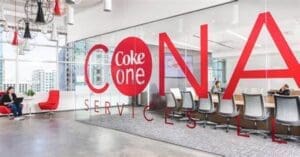CONA Services Provides a Common Platform for Supply Chain Collaboration
CONA Services LLC is an IT services company owned and governed by the 11 largest Coca-Cola bottlers in North America. CONA is a strategic partner that provides its bottlers with a common set of processes, data standards, and technology platforms. CONA, an abbreviation for Coke One North America (CONA), solutions have been rolled out to more than 500 locations in the US and Canada, representing 80,000 employees and more than $21 billion in annual revenue.
CONA hosts the bottlers’ solutions in a Microsoft Azure cloud environment. Its main applications include SAP for backend transactions, Blue Yonder for supply chain management, and Salesforce for sales. Snowflake is their BI environment.
An Interesting History
The history of both CONA and the bottlers they support is interesting. In 2009, The Coca-Cola Company unveiled its “2020 Vision and Roadmap for Winning Together.” This vision encompassed both Coca-Cola and their bottlers. Coca-Cola’s CEO at the time said that by “working hand-in-hand” with their bottling partners they would build a “unified and aligned system equipped for long-term sustainable growth.”
According to Baron Jordan, the Chief Product Officer for Supply Chain at CONA, the map of bottlers’ territories was, in places, disjointed and inefficient. In 2010, Coca-Cola acquired the North American operations of Coca-Cola Enterprises, the largest bottler in North America. Other acquisitions and new bottler agreements followed. The result was a much more streamlined regional bottling structure—with the large majority of the North American Coca-Cola business being supported by large and sophisticated regional bottling companies.
In terms of production and supply chain coverage, these 11 bottling companies work together. While they are separate and independently-owned organizations, they agreed with The Coca-Cola Company to come on to a common data platform with common data standards. CONA Services was created in 2016 to support this vision.
CONA’s IT environment is cost-efficient and has very high service levels. It is also best in class in terms of preventing unplanned downtime.
The Value of a Common Platform
More importantly, by having the largest 11 bottlers on a common platform, the bottlers can work together to meet customer demand efficiently. The more than 40 production centers owned by the CONA bottlers work cooperatively as a common production system to drive supply chain efficiencies.
The National Product Supply Group, governed by members from most US producing bottlers, develops the collaborative supply chain plan based on defined governance processes. The demand, supply, transportation, and warehousing plans are created on the Blue Yonder platform. Eventually, these plans are executed. The production plan is fed into the MRP for production execution. Daily transportation and warehouse plans are developed that go down to the level of what will be picked, packed, and shipped.
Mr. Jordan describes the Blue Yonder user interface as being very user-friendly. “We have dashboards on top of dashboards.” There are green, yellow, and red icons that help users see if things are proceeding on schedule. “We have many types of rules, tolerances and variances that are electronically detected as this data flows through the system.” The system can detect a deviation from a forecast, for example, and yet understand if the deviation is in an allowable range and that an alert does not have to be generated.
However, unexpected events do happen. For example, a large customer may place a large, unforeseen order that becomes visible at 9:00 a.m. Business operations may decide that its parameters must be changed to support the order. “And we’re going to be there with them partnering on how to do that, how to change the data, change the process, and move things forward.” So, while CONA is not responsible for creating the plans, Mr. Jordan points out that “we’re deeply involved in daily operations.”
A Foundation for AI
One of the things that Mr. Jordan is excited about is artificial intelligence. Because they have the foundation in place – all their core applications are up to date on the newest releases and share common data, the bottlers are in a place where they can leverage “all of this data that we’ve amassed.” We can take things to the “next level in terms of interoperability and connected planning.” AI will allow the extended enterprise to further connect logistics and production execution, create more visibility, and thus be “more nimble and more proactive in terms of how we run the entire enterprise.”
One CONA bottler is also piloting Blue Yonder’s cognitive demand planning capabilities. This solution goes beyond a statistical baseline forecast to an improved forecast model capable based on including other forms of data and using other algorithms. Like many, CONA and its bottlers are looking for the right use cases. Should it be used to forecast a group of materials? Specific products? An important customer’s demand? Or for promotions? They have an internal data science team working with their beta bottler on this.
CONA is believes in moving away from a “black-box solution”, meaning a system or device whose internal operations or algorithms are not readily visible or understandable to those using or interacting with it. “That’s not going to work for our business,” Mr. Jordan said. Operations need to understand and know what’s going on, and they also want to merge their models with Blue Yonder’s baseline model. Mr. Jordan notes that Blue Yonder now supports a mix-and-match AI strategy.
Mr. Jordan concluded by saying, “the speed with which Blue Yonder is developing this cognitive platform is remarkable. That said, we are going to perform our due diligence, and construct value propositions and business cases. But we’re engaged in that. There’s a lot to evaluate.”
The post CONA Services Embraces Supply Chain AI appeared first on Logistics Viewpoints.
